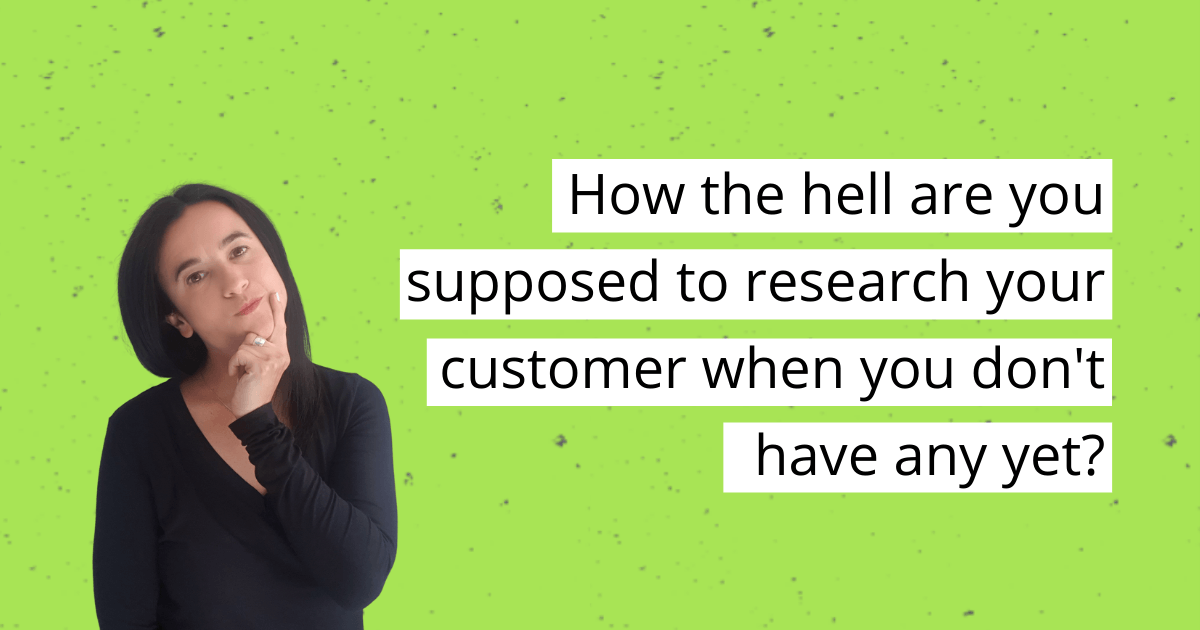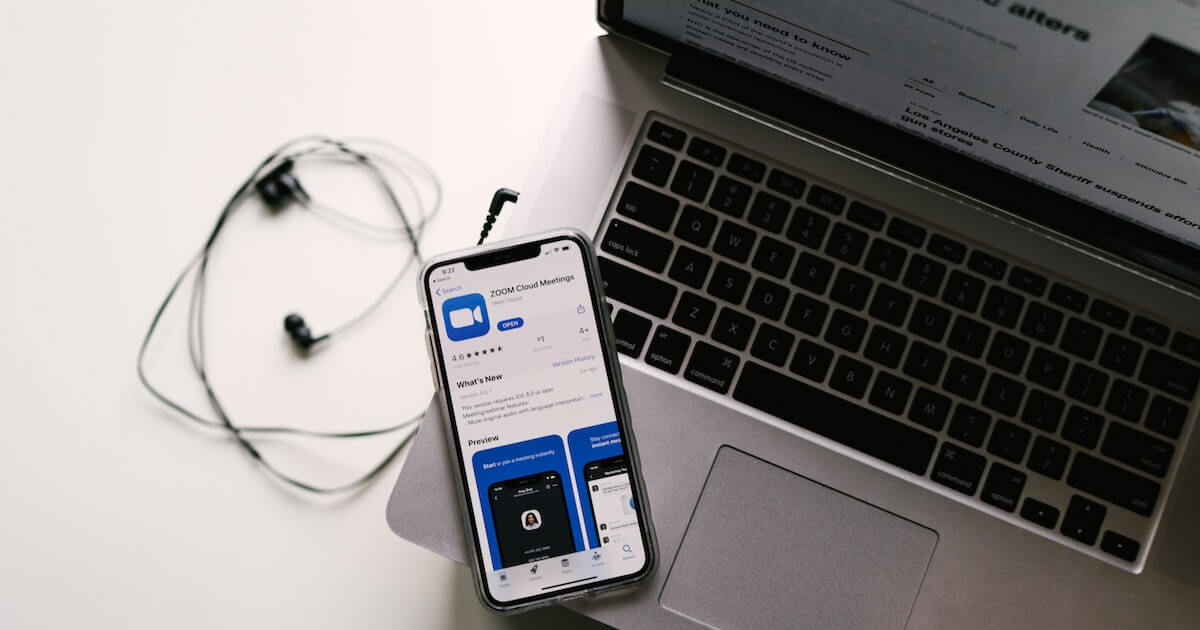Effective Ways To Create A Buyer Persona, Even When You Don’t Have Customers (Yet)
So, you’re brought into the concept of personas. Welcome.
If you’re not quite sure yet, my blog on how buyer personas can supercharge your business is for you!
You understand the concept, appreciate the benefits, know how important the research stage is to the process and you’re eager to get started.
But wait…most of the advice on how to create a buyer persona relates to speaking to your customers.

How the hell are you supposed to research your customer when you don’t have any yet?
It seems quite a challenge to identify the key segments and look for patterns with only a handful of customer records, or none at all.
Never fear! Here are some great ways to get you started on the road to nailing your personas. In fact, even when you do have a substantial customer base, you shouldn’t rely on that alone.
The good news is, you’re not starting from a blank sheet of paper. You know what problem your solution solves and also who is most likely to benefit from it. You can take that as your broad ‘hypothetical’ persona to start with. Through additional research, you can check your assumptions and hone in on your actual buyer persona.
Also, take a moment to step back and consider if the buyer is going to be the same person as the user. You may end up with multiple personas, but the process of creating them will be the same.
Interviewing prospects

Interviewing customers is one of the most effective ways to understand your customer and create a buyer persona.
However, existing customers can only tell part of the story, prospects are also a valuable resource. They’ve not bought yet so you can really delve into the pain points they’re experiencing and identify the deciding factors that will push them over the edge to purchasing.
Based on your overall target market you can identify potential prospects and start to interview them.
This could be asking people you already know or putting a survey out on LinkedIn. Use your coworkers, their connections, as well as social media, to find and reach these prospects. Just make sure that they know it isn’t a sales call, and don’t turn it into one.
During this process, you’ll hopefully start to figure out the traits in the prospects that make them ideal customers for your business. This could be their attitude, beliefs or maybe their current situation. Record as much information as you can during the interview stage so that you can seek out patterns later.
How many interviews should you do? Well, that’s a bit tricky to put a figure on. If you start to hear the same things over and over again, found some patterns and you’ve stopped learning anything new, I reckon you’ve spoken to enough people.
Industry events

You may decide that you want to attend, exhibit or even sponsor some events. However, when developing personas, the event website and promotional material can be a handy resource.
- See who is attending, exhibiting and speaking. Use that information as a springboard into further research
- Look at the topics being discussed to get clues into trends and areas of interest
- Check social media and blogs for areas of discussion and the questions people are posing
Industry Reports
Another great resource to look into is industry reports. You’ll want to try and find the most up to date information available. This type of report can provide a wealth of information, but do your research and make sure it’s from a reputable source (no fake news here!), and that it is applicable to your region.
Although this may not provide the specifics for your solution, you can glean some insights into key challenges in your chosen industry. As well as the report itself, look for additional commentary in blog posts or comments. This can throw up additional questions or objections your target audience has.
Social media
![]()
Look to the leading accounts in your industry, those with ‘expert’ status, the thought leaders and trailblazers. Identify the themes around challenges in the sector, bugbears and what’s in vogue. Not everything you uncover will be a great fit for your solution, but it always helps to know the hot topics.
Find the hashtags that are prevalent to your target market and get following! See what’s being posted, and just as vital, see how your target market reacts and engages. The conversations that occur will probably be more valuable to you than the initial posts.
Competitor and complementary service analysis
Even if you feel you don’t have any direct competitors at the moment, you’re almost certain to have companies that provide a solution to the problem that you solve or operate in the same industry or sector.
They can provide you with some clues as to what’s been working for them and also what’s already out there so you can differentiate yourself. Some good places to look are:
FAQ pages
Find out what common questions they receive. If you have a similar target audience the chances are you’ll get these questions too. Think about how you can serve this audience and provide content that helps them in their journey towards a purchase.
Content
Look at what content your competitors or complementary businesses offer. This isn’t about stealing their ideas or copying what they’ve done. Use the information out there to inform your own strategy and put your own stamp on helping your audience.
Social media
As I mentioned earlier, social media channels can provide some amazing clues as to what engages your audience. You can see not only the content that your competitors are putting out there, but also get an understanding of the engagement certain content has. Don’t stop at the surface level, dig into the comments and responses to understand the conversations that are happening.
Reviews
This could be reviews of businesses or individual products and services. Discover what your target market likes and also what frustrates them. How do they assess whether the product was a good fit, what words and language do they use, how can you echo this back to them?
Remember to look on competitor websites, google and social media, but also industry type directories or review aggregators like G2 for business software and services.
Job descriptions
If you’re playing in the B2B space, job descriptions for your target market can reveal some fascinating details. For example, understanding the skills and experience companies are looking for provides an idea of the direction they are trying to go in and how they are looking to grow.
You can also learn what technology or ways of working businesses are using through how they advertise. If there isn’t a vacant position, check out LinkedIn for how individuals in similar positions describe their roles. How do they explain what they do? What language do they use to describe their role? What are their key achievements and challenges?
Test & Learn
The research stage is vital and hopefully, I’ve inspired you to get started, even if you’re low on customers right now.
But, don’t get sucked into a never-ending rabbit warren! Don’t use the research stage as an endless excuse to get started.
Once you’ve developed a solid persona, do some testing of your own. Produce content you think will appeal and see how it lands. Continue to talk to your customers and prospects to fine-tune your messaging, because a buyer persona is always evolving.
If 2020 taught us anything, it’s that things change.

Not got the time to do the research? Let me do the heavy lifting for you.